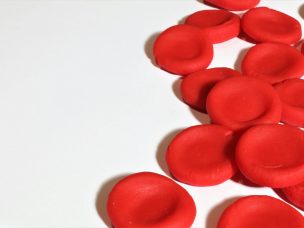For over two decades, the daily account of the Opioid Crisis has focused on an increase in accidental overdoses. Patients with documented chronic medical conditions were found to not be a part of the populous who obtained lethal agents. The powerful painkillers that have been obtained both legally and illegally have changed the landscape for the business of medicine and the practice of Medicine.
Pain Management Clinics seek to provide individual patient-centered care to those with acute and chronic pain. In the United States, these patients face significant challenges in obtaining adequate care, resulting in profound physical, emotional, and societal costs. Pain management as a specialty has set out to form additional task forces to be able to adequately treat patients during the midst of a National Healthcare crisis where opioid drugs themselves are near being criminalized.
The biology of Sickle Cell Disease pain is complex, varied, and likely arises from multiple mechanisms depending on whether an individual is suffering from acute or chronic pain. Pain Medicine Clinics recognize that they are ill-equipped to treat these patients long term because of a lack of evidence based-management guidelines and research in both children and adults, as Sickle Cell Disease patients begin having painful vaso-occlusive crisis in early childhood.
The rise of patients demanding pain medication in the Emergency Department setting only compounds the issue of acute pain management in a patient with Sickle Cell Disease. In smaller cities or rural locations where access to a Hematologist is limited, a patient with Sickle Cell Disease that presents in crisis is often treated suspiciously by unknowing Medical Staff.
As children age and transition out of Pediatric Care, they require an adult-focused Sickle Cell Disease specialist. In many rural areas, those specialists are very far and few between, and the patients who maintain good communication with their Pediatricians are still treated by them as adults. The other alternative for patients with Sickle Cell Disease in both rural areas and large urban cities is to use the Emergency Department as their primary source of care.
In early adult life, the patient will have an increased amount of severe vaso-occlusive episodes, Emergency Department visits, many hospitalizations. Outside of the setting of a teaching hospital, the Medical Staff within the Emergency Department is often not trained in the current Standard of Care Therapies for the many known complications. The frequency of visits to the Emergency Department with the chief complaint of pain will often have the patient either turned away as they are perceived as drug seekers or will be undertreated, which is then a precursor for complications.
In areas without properly trained Emergency Physicians, the patient will not undergo a thorough physical exam that would reveal subtle physical characteristics of patients with Sickle Cell Anemia.
During this current Opioid Crisis, the Sickle Cell Disease patient population faces significant health care disparities that affect further access to and delivery of comprehensive pain care and mental health services. Further, stigma, negative provider attitudes, and perceived racial bias are associated with Sickle Cell Disease pain, which may compromise care, thus leading to increased suffering from pain and pain care delivery.
References:
- Tanvi, Misra. Why the Rural Opioid Crisis is Different From the Urban One. CityLab. Feb 14, 2019.
- Sorof MD, Jonathan. Addressing Disparities in the Care of People with Sickle Cell Disease. Morning Consultant. Nov 13, 2018
- Report: Practice Guidelines for Chronic Pain Management: A Report by the American Society of Anesthesiologists Task Force on Pain Management, Chronic Pain Section.










